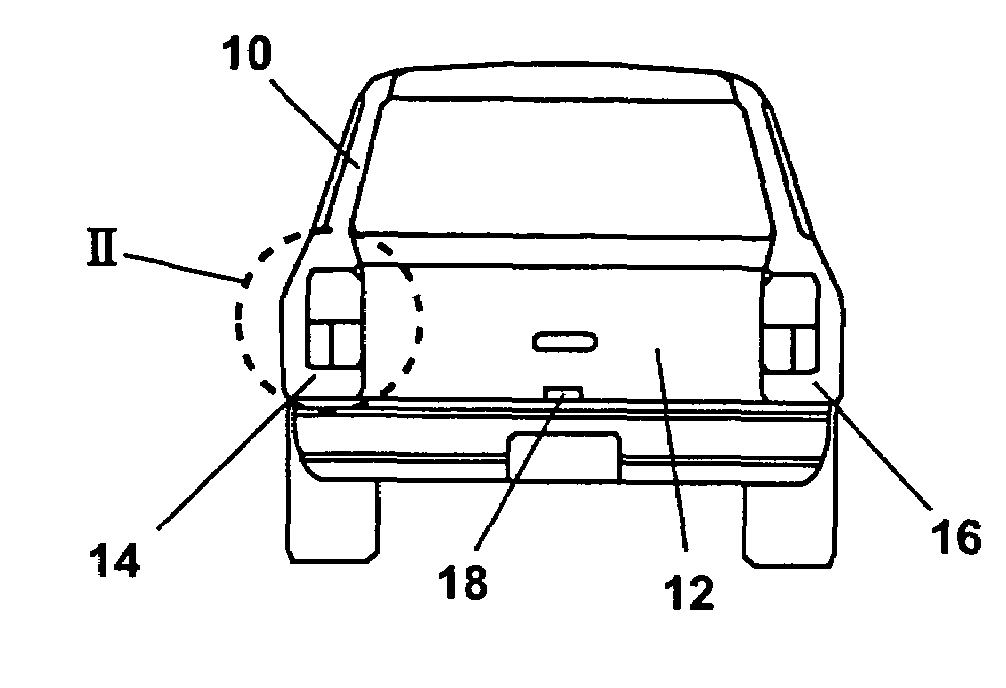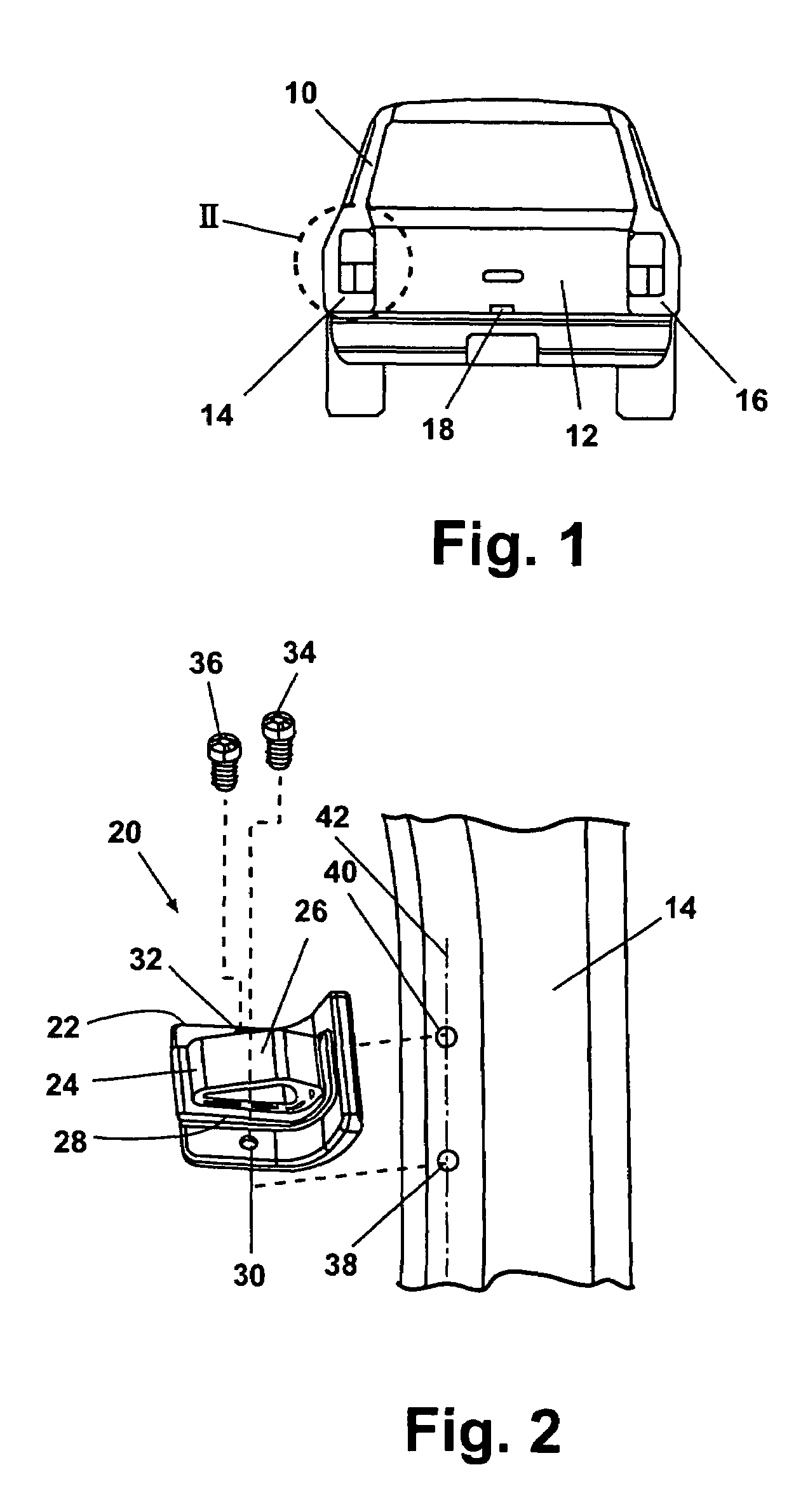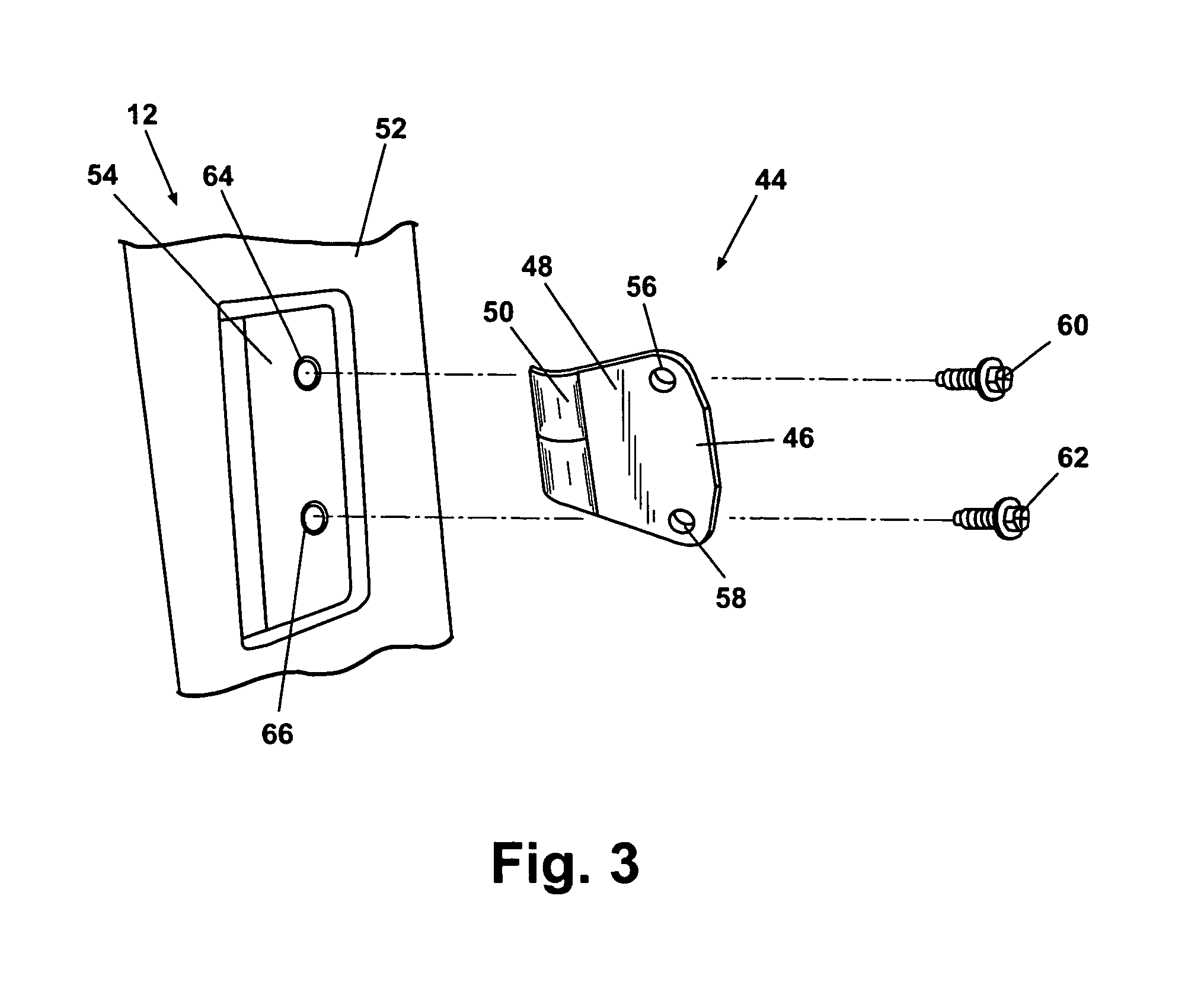Wedge assembly
a wedge and assembly technology, applied in the field of displacement limiting systems, can solve the problems of non-parallel deflection, additional vehicle noise, undesirable match-boxing, etc., and achieve the effects of reducing the sound level of the interior vehicle, sliding the wedge, and improving the acoustic performance of the vehicl
- Summary
- Abstract
- Description
- Claims
- Application Information
AI Technical Summary
Benefits of technology
Problems solved by technology
Method used
Image
Examples
Embodiment Construction
[0023]The following description is merely exemplary in nature and is in no way intended to limit the invention, its application, or uses.
[0024]According to one preferred embodiment of the present invention and referring to FIG. 1, a vehicle 10 includes a rear lift-gate door 12 positioned between both a left support post 14 and a right support post 16 of vehicle 10. A latch 18 is generally provided about mid span along a bottom edge of rear lift-gate door 12. Side edges of rear lift-gate door 12 adjacent to left support post 14 and right support post 16, respectively, are generally not latched or otherwise connectable to left support post 14 or right support post 16.
[0025]As best seen in FIG. 2, a wedge sub-assembly 20 having a wedge support member 22 is supported from left support post 14. Wedge support member 22 is preferably provided of a “hard” polymeric material, for example a glass fiber reinforced polyamide material such as nylon 6-6, molded into the configuration shown. The t...
PUM
 Login to View More
Login to View More Abstract
Description
Claims
Application Information
 Login to View More
Login to View More - R&D
- Intellectual Property
- Life Sciences
- Materials
- Tech Scout
- Unparalleled Data Quality
- Higher Quality Content
- 60% Fewer Hallucinations
Browse by: Latest US Patents, China's latest patents, Technical Efficacy Thesaurus, Application Domain, Technology Topic, Popular Technical Reports.
© 2025 PatSnap. All rights reserved.Legal|Privacy policy|Modern Slavery Act Transparency Statement|Sitemap|About US| Contact US: help@patsnap.com



